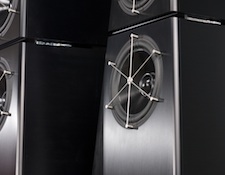It’s the time of year for saving money!

A reader recently wrote: “I would love to see an article on
speakers where the actual cost of the drivers is compared to the cabinet and
electronics. My point is some folk are buying speakers based more on their
looks (spouse appeal) rather than how they sound.”
I would never dispute that looks play an important part in speaker
choice, but given the number of systems I’ve seen shoehorned into inappropriate
living rooms during my time as an audiophile, I have to disagree with the idea
that looks trump performance.
But the reader’s first point, that the cost of parts in premium speakers
verses the cost of the final product is out of whack is worth examining in more detail.
The traditional formula used by manufacturers to determine
retail price was six-times parts costs. How many manufacturers actually use
this scheme is anyone’s guess. John Dunlavy didn’t. When I reviewed the Dunlavy
SC-VI speakers, Dunlavy told me exactly what his parts costs were – $7650.
Based on the six-times rule he should have charged $45,900 instead of $25,500
for a pair of SC-VI’s. Perhaps if he had charged more his business wouldn’t
have failed (in truth Dunlavy’s less than stellar ability to deliver paid-for
product on time probably did more to doom the firm than under-pricing.)
DIY’ers often complain that the parts cost of many
premium-priced speakers compared to the final cost indicates that most high-end
speakers are radically over-priced. But, rarely do DIY’ers factor in the cost
of R&D, development, prototyping, production tools, and marketing. I dare
any DIY’er to build a Magico, YG, Wisdom, or Wilson clone that duplicates the
original’s cabinets or overall construction. Unlike electronics, top-echelon
speakers can’t benefit from economies of scale for parts and circuits. There
simply aren’t any shortcuts for the man-hours and fabrication tools needed to build a premium speaker.
Perhaps we audiophiles have become spoiled. We expect each new
generation of products to surpass the previous one in both performance and
value. And while the most successful electronics firms have continued to
deliver on this “new paradigm of value,” speaker manufacturers have a far more
difficult road. Sure, speakers have benefited from better parts over the years,
but wood, aluminum, steel, plywood, and other raw materials that go into
speakers haven not seen any price decreases. Raw materials, machine tools, and
the costs of skilled labor have all gone up steadily, and show no signs of abating.
So, while I fully expect the next generation of DACs to
continue to increase in performance while maintaining similar, if not lower
prices, I do not think we will ever see top-performing speaker systems becoming
“affordable.” That’s not to say clever manufacturers, such as Golden Ear or Magnapan won’t continue to make high-value speakers whose performance approaches far more expensive brands, but there are no shortcuts or technological breakthroughs that can duplicate the level of fit, finish, attention to detail, and man-hours required to build a premium transducer.





